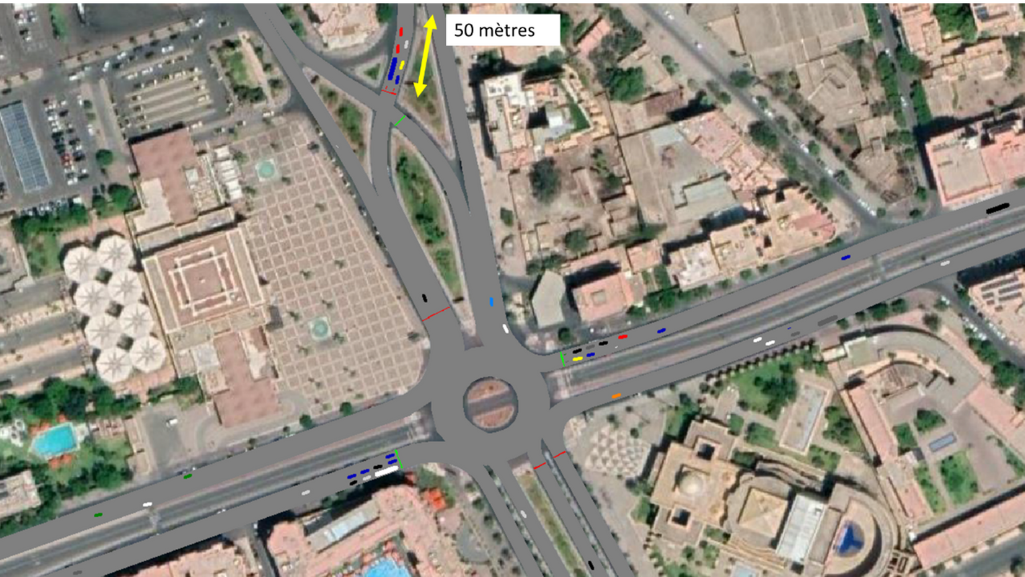Traffic flow simulations are today an essential part of the auto industry. They are critical to the development of many new systems that improve safety, reliability, and communication of vehicles. But they also contribute to saving money and time invested in developing auto systems. Let’s see how.
What are traffic flow simulations?
In today’s traffic, driving is very much affected by what other road users around us do. Every driver is affected when the other vehicles drive faster behind, or slower in front, or change lanes. The whole traffic flow emerges from the sum of actions of individual users.
In the auto industry and in research, it is common to create virtual traffic microsimulations. They create the traffic flow by generating the movements of vehicles, just as in reality.
The result is a multitude of scenarios with different numbers of vehicles and realistic driving behaviors. Therefore, with traffic flow simulation, the need to “imagine” such scenarios is replaced by a generic methodology.
What are the challenges of traffic flow simulations?
Simulations – the re-creation of reality by means of models – is widely used in many technical and physical domains: multi-body physics, CFD, control system development, and others.
Experiments with real vehicles are especially expensive and require much time and human effort. If such prototypes are to be tested in a real-life traffic environment, time and costs can explode.
Furthermore, environmental conditions such as icy roads or low visibility, can be included in virtual testing – regardless of the season and location.
Another strong argument for simulation is safety: Even in cases of failures leading to accidents, no one will get hurt in simulations.
How are traffic flow simulations used?
For all these reasons, simulations are applied. The system under test is “played with” in a computer environment.
In the beginning, the engineers often start “small” – they simulate an intersection, a lane change, or a pedestrian crossing. In this kind of simulations, the surroundings are more or less fixed, the movements of other vehicles are pre-defined, but the parameters are varied.
In contrast, traffic flow simulation automatically creates all relevant scenarios for a pre-defined traffic condition, like peak hour on a three-lane motorway or any other input.
What are the benefits of traffic simulation in automotive development?
Modern vehicles contain systems that support the driver in daily driving tasks. They are collectively known as ADAS – Advanced Driver Assistance Systems. And they do so by taking the vehicle’s surroundings into account.
Major examples of ADAS are Adaptive Cruise Control (ACC) that keeps the car in a proper distance from the vehicle in front of it; and Lane Change Assist, that warns the driver of vehicles nearing from neighboring lanes.
To develop ADAS that correctly react to other vehicles, it is necessary to realistically simulate the behavior of surrounding vehicles. Microscopic traffic flow simulation provides this, resulting in a faster development process and thus shorter time to market.
Other applications for traffic flow simulation include powertrain development. Realistic load profiles depend on the possibilities for vehicle movement, and this can be determined by traffic flow simulation. Realistic load profiles can be created using traffic flow simulation, for power train control, RDE testing or other development steps.
What are the best ways to save time and money in auto simulations?
The best way to cover a maximum number of relevant scenarios from real-world traffic, is to use a traffic simulation.
Traffic simulations, which model how vehicles and drivers behave, create multiple realistic scenarios. They automatically create situations, variations, and combinations.
With a simulation running fast, and on parallel machines (HPC), it can simulate millions of test miles overnight. This provides for a safe and short time to market.



